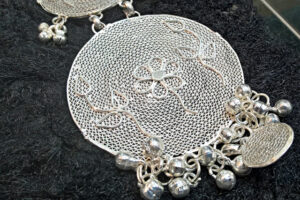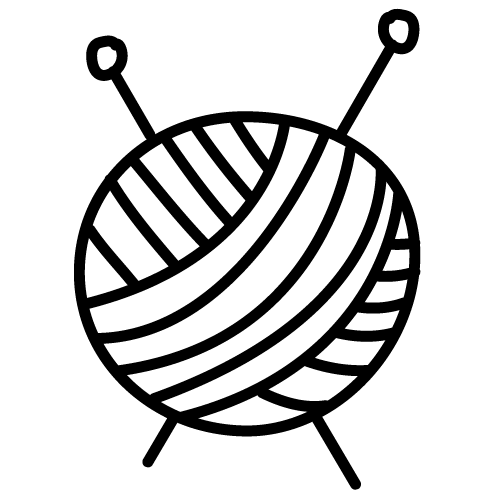Everything you need to know about
Aari Embroidery.
What is Embroidery?
Embroidery is the thread work that improves the appearance of textile or item.
This thread work is usually performed on natural textiles with strong patterns.
Indian embroidery is motivated by various religions and has a unique taste.
It is appreciated by the artists.
Embroidery patterns are determined based on the cloth’s pattern.
What is Aari Embroidery?
Aari embroidery was started in the Mughal era.
It is a kind of embroidery performed by pulling the fabric strongly over a wooden mould.
A pen-like needle indicates a crochet needle which is practised to do the fundamental Aari work.
The needle technique springs from the mocha village.
They practice this kind of needlework to sew complex designs on leather footwear.
The name is established from the hollow needle known as Aari.
This work incorporates embellishments such as beads, stones, golden as well as silver threads providing a supreme abundance to the pattern.
Aari embroidery is recognised for its fine thread work that improves the gravitation of fabrication done by hands.
It has recorded its presence from the twelfth-century that is from the Mughal era.
The work has expanded to Lucknow, Uttar Pradesh, Rajasthan, Gujarat and more.
These places supplemented conventional patterns and noticed the masterpiece of the embroidery.
Starting from the ruling kings and the queens and their families.
Presently, the art can be viewed on a cap on top of an adolescent, carrying common effects belonging to different states.
For example, the bride’s saree and chaniya cholis as well as festive attire.
This art has made its presence in South India.
Proficient craftsmen practice the Aari embroidery to improve the popular sarees of the silk fabric in the south.
Srikalahasti in Andhra Pradesh is a religious village.
It likewise establishes the abundance of Aari embroidery.
Many women discovered classical embroidery which provided them with an opportunity to make a living.
Aari embroidery and sewing garments are artistically connected.
The tiny institute of craftsmen is approved by the government and received relief for selling their items.
How did it begin?
Aari embroidery started in the twelfth-century, which noted the control of the Mughal emperors.
They were influenced by the flowery motifs and conventional patterns.
This familiarisation and this is the reason why Aari embroidery gained fame.
However, with time Kutch, Lucknow, and Delhi are some of the places that began acknowledging the art of Aari embroidery, indicating the progressive reputation of Aari work.
The Origin
Aari embroidery started with a simplistic method of utilising a lead pencil to draw a pattern on the cloth, following which a needle was utilized to penetrate holes on the lines of the pattern lines.
Next, the threaded needle entered into the cloth and emerged with a loop.
In this method, the simply sewed patterns resulted in the development of Aari embroidery as an exclusive art form.
Aari embroidery was originally practised by those belonging to the Muslim dominated villages of India.
They essentially used the Aari method.
Aari embroidery is believed to have scattered in Barabanki.
It was named after Katla embroidery.
This was because this craftwork was performed on a case which was dependent on the beliefs of furniture.
Artisans in Kutch districts likewise developed the primary faces behind this cloth, as they utilized the hooked needle to reevaluate the importance of conventional excellence.
The Varieties
Aari embroidery includes the utilization of many beads and needles.
Salma, Gota, Nakshi, Dabka, as well as Aara, are few of the variations associated with this craftwork.
Aari embroidery is generally linked with flowery themes.
Even Katori, Sitara and Tikena are a few components that are employed in this artwork.
All these aids in producing mesmerising and creative patterns.
The tools and raw material employed.
The hollow needle used for Aari embroidery is available only in one size and is accessible in the neighbourhood markets.
Vivid threads are used as per the patterns.
Various instruments and raw materials utilised in this work are:
- Shears employed to take the required amount of thread.
- Aari needle employed to make the patterns.
- Various kinds and hues of beads and stones are employed to decorate the embellished pattern.
- Fabric gum is employed to set the beads on cloth.
- Zari, gold as well as the silver thread is employed to sew the design.
- Different tones of embellishment thread are employed to embellish the pattern.
- Radiant check is a two-part thread consisting of a nuclear centre wire, including a coiled wire throughout it.
- Bullion or purl thread is likewise a sort of wire wound into a strong coil that resembles strand of gold gems.
Why are beads and stones utilized?
Aari embroidery uses beads and stones to form a gleaming impression on clothes.
These decorations are located in a method that they form a web-like design.
Aari embroidery uses thread and the needlework; yet, beads, as well as other decorations, are employed to supplement abundance to the embellishment.
Aari embroidery is suitable for every occasion as it decorates various kinds of products.
This leads to Aari embroidery items being fit for individuals of all demographics.
Aari embroidery is used to form complex patterns throughout the cloth or on several parts of the item to improve its appearance.
The process
It begins with preparing the pattern.
The pattern is then moved onto the cloth.
Sometimes the craftsmen immediately create the designs on the cloth.
This is finished utilizing a lead pencil.
The pattern is initially created on a tracing paper.
With a needle, holes are penetrated up and down the lines.
Then, this is put on the cloth.
Kerosene oil, and robin blue are mixed and cleaned with a sponge on the following paper.
It leaks through the holes and is moved to the cloth.
Aari is a hollow needle used in the craft.
By using modest dimensions of shading the figures and themes in the patterns can be exceptionally illustrative.
In the next stage, the cloth is strongly pulled over a casing called the adda.
This idea has developed from a knockdown bed called the khatia utilized in rustic areas.
It follows the gathering and fixing standards of the khatia, and gives the fabric a uniform strain.
This casing can be produced to fit any measure of the cloth.
The adda comprises four wooden fences laying on wooden posts.
A little metal case may likewise be utilized in case the embroidery focuses on a small region.
Aari embroidery is concluded by pulling the fabric to be embroidered upon the adda casing and afterwards performing the thread work on sections of the pulled fabric with an Aari or crochet-hook like a tool.
A chain stitch is prepared with stitching.
The needle is pushed through the cloth and the thread is driven into the hook from behind.
At the point when the needle is pulled up for the second time, it creates a loop.
Whenever the needle goes through the loop and forms another loop through the last loop.
A similar method is rehearsed.
The lines are accurate and tiny.
After the embroidery, the thread is flattened with the help of a wooden hammer from the top, with a wooden blacksmith’s iron which can be carried in the hands and is put under the cloth.
This establishes the string and provides the embroidery with an enhanced and completed appearance.
The method is known as Zari embroidery.
What is prepared using Aari Embroidery?
This craft is prepared in many parts of India to which they add their unique conventional patterns.
Aari embroidery is a famous and recognized art form of India, each adding its unique way to it.
The motifs generally used are blossoms and creatures.
The best piece of the embroidery work is Kalamkari patchwork.
It is prepared for every kind of cloth.
The patterns are embellished on a blouse, dress materials, sarees as well as Churidar.
The craft is chiefly prepared by women; but then, men also contributed to the work.
Aari embroidery can simply be protected by dry cleaning, soft ironing as well as gently washing it with hands.
How is it regarded today?
Aari embroidery is time-consuming involving needle as well as thread work.
Presently, with the availability of improved technologies, Aari embroidery takes lesser time to complete.
The patterns on sarees are admired by women.
It is prepared chiefly on the sarees while the blouses do not have any design and are simple.
So, Aari embroidery on Kurta is prepared with a stress on the bodice as well as the edge which makes it look beautiful.
The embroidery is performed on dupattas as well, making it look elegant and catching.
Why is the Aari art form famous?
Aari art form is famous for its elegant and gentle thread work.
It is prepared widely in Ahmedabad.
The stitching used for Aari embroidery is the chain stitch.
It has its roots from the Mughal period, themes of Aari embroidery are obtained mostly from nature.
These themes include leaves, creepers, blossoms, trees, and creatures.
This kind of decoration is positioned in modern fashion too.
How is the demand globally?
Recognizing its ‘all seasonal’ comfort, the demand of this cloth has inclined throughout the world.
Aari embroidery has recently caught the eye of the western market which has led to an increase in its sale and popularity.
With the increasing demand of Aari clothes, global markets are getting more business by increasing the sale in India.
Did we miss something?
Let us know in the comments down below!















